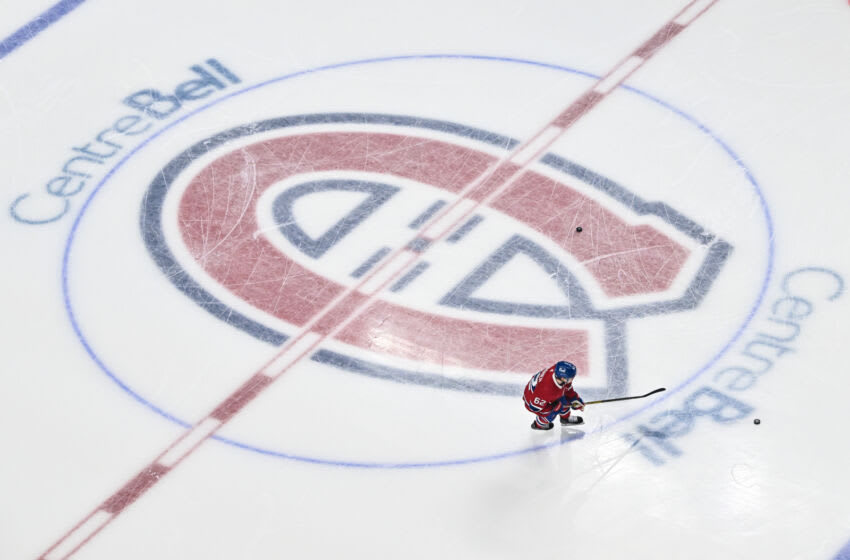The appointment of Adam Nicholas as the Montreal
Canadiens’ Director of Hockey Development may fly under the radar, but it is a very interesting move that fits perfectly with the new management’s philosophy.
Under GM Kent Hughes, player development will no longer be a generic term to summarize the efforts made to help prospects reach the
NHL. It will also mean working with Canadiens players to maximize their strengths. As an agent, finding the right people to help his clients perform was a big part of Hughes’ job, and he understood over the years that player development was an ongoing process that wasn’t reserved for prospects.
And that’s where Nicholas is most likely to help.
The 36-year-old runs a company that specializes in skills development, starting with skating techniques. He has worked for the University of Massachusetts in Lowell, the
Toronto Maple Leafs, and the Chicago Steel, a USHL team that became a model of progressiveness under former GM Ryan Hardy, now with the Leafs.
Nicholas is enough of a name in hockey that
Zdeno Chara, who ran into him at Starbucks one day in 2016,
asked to work with him in order to fix some inefficiencies in his skating mechanics. Chara was able to compensate for his loss of speed by improving his footwork, the quality of his pivots, and hip mobility, and has extended his career in incredible fashion.
Before we go any further, it is important to differentiate a skills coach from a development coach.
A skills coach focuses on a particular skill and teaches the player how to maximize it. A shooting coach, for example, will teach a player how to generate velocity, hide the release, or send deceptive signals about what type of shot he’s about to unload, or its location.
But this type of work that players mostly do in the off-season often is done in a vacuum.
How does improving a player’s shot or edge work fit into their overall game? How do you maximize the effectiveness of a shot based on the style of play a team is playing? Beyond pure speed or stride efficiency, are there things that can be improved based on the player’s position and the movements he makes most often?
All these questions are the focus of a development coach.
Sure, he will want to develop skills, but the point is also to apply them in the context of a game, taking into account reads, players positioning, etc.
With the Steel, Nicholas worked for two years with a young performance coach named Bobby Lucas, who is now with the University of Michigan men’s hockey team. Lucas would develop individualized training programs based on each player’s age and body type, but also based on the movements that were most important for each player to improve, and Nicholas would then take over the on-ice work.
Every step of the process was coordinated and integrated.
Before the Steel players set foot in the gym, Nicholas and Lucas used video to help them understand the correlation between the physical demands of a game and the work they were about to do off the ice.
Lucas praised Nicholas’ infectious enthusiasm and relentless motor. The two men still talk regularly and Lucas continues to pick his brain to “keep that intellectual stimulus alive”. And the young man believes that Nicholas will have no trouble applying his methods to the Canadiens.
“I don’t think he’ll have much problem at all, because the first thing that comes to mind is many conversations that we had about player development at that next level. Does it need to focus on these NHL guys and where they might be deficient in certain areas, or is time better spent improving or growing where they’re already great ?,” said Lucas. “That’s something I never really considered. When I looked at it, I’d always say, well, let’s bring up the deficiencies. But Adam makes an excellent point: These guys have relied on these great skills to get them to this point, can we then get one more percent out of whatever it is they do great to make them elite? And that is where he has such an eye for the detail of what guys are doing, be it shin angles to blade contact on ice, that finite detail becomes all the more important when you take it to the NHL level. The margin of difference player to player, or between elite and great, is so fine that you need somebody with the eye that Adam has for those small details to see what actually separates those.
And then his approach is just so open-minded that it brings the player into the conversation. So it’s so much less a dictation of ‘here’s what you need to do’. The player becomes a lot more bought in when it’s collaborative, and Adam has the creativity to tailor it to whatever those discussions play out to be, or action that just comes with it.”
If the goal is for Nicholas to spend significant time with the Canadiens — he will also be working with prospects at other levels — it will be interesting to see how he and the Canadiens can overcome some logistical challenges. Practice time is limited in the NHL and any extra work is only done on a voluntary basis. It will take some creative thinking to get Nicholas’ development work to mesh with Martin St. Louis’ practices.
“I’m not sure exactly what it’s going to look like, but we’re going to work together,” said St. Louis. “I think as a head coach in the NHL you have a lot of work to do, you have to be able to delegate and still be able to look at the big picture. I’ve always been a team player and I don’t mind delegating and trusting the guys around me who spend more time doing specialized work, for whom this one thing is their job.
“I’ve got to try to help to guys to do their jobs through good communication.”
But when you hear Nicholas talk, like he did on the
Hockey Think Tank Podcast about developing skills through better use of space on the ice, or the need to recreate game timing, pace and reads for drills to be truly valuable, you can tell there are similarities with St. Louis’ vision.
The day he was introduced as GM, Kent Hughes expressed a wish to see the upcoming player development department be better integrated with the coaching staff and make extensive use of video. Making sure people don’t work in silos and that there is a free-flowing exchange of ideas and information between departments seems to be an important principle in the new administration, and this is exactly how Nicholas operates as well.
Even if it’s already underway, we can expect the Canadiens to continue to transform the way they design their practices.

 awinninghabit.com
awinninghabit.com



